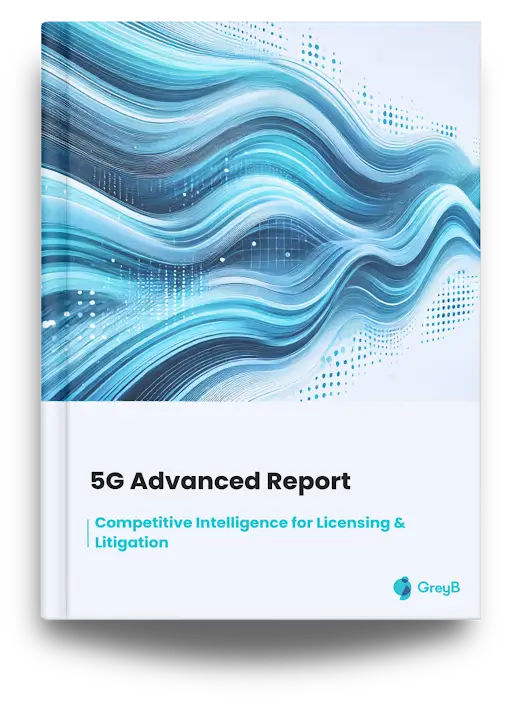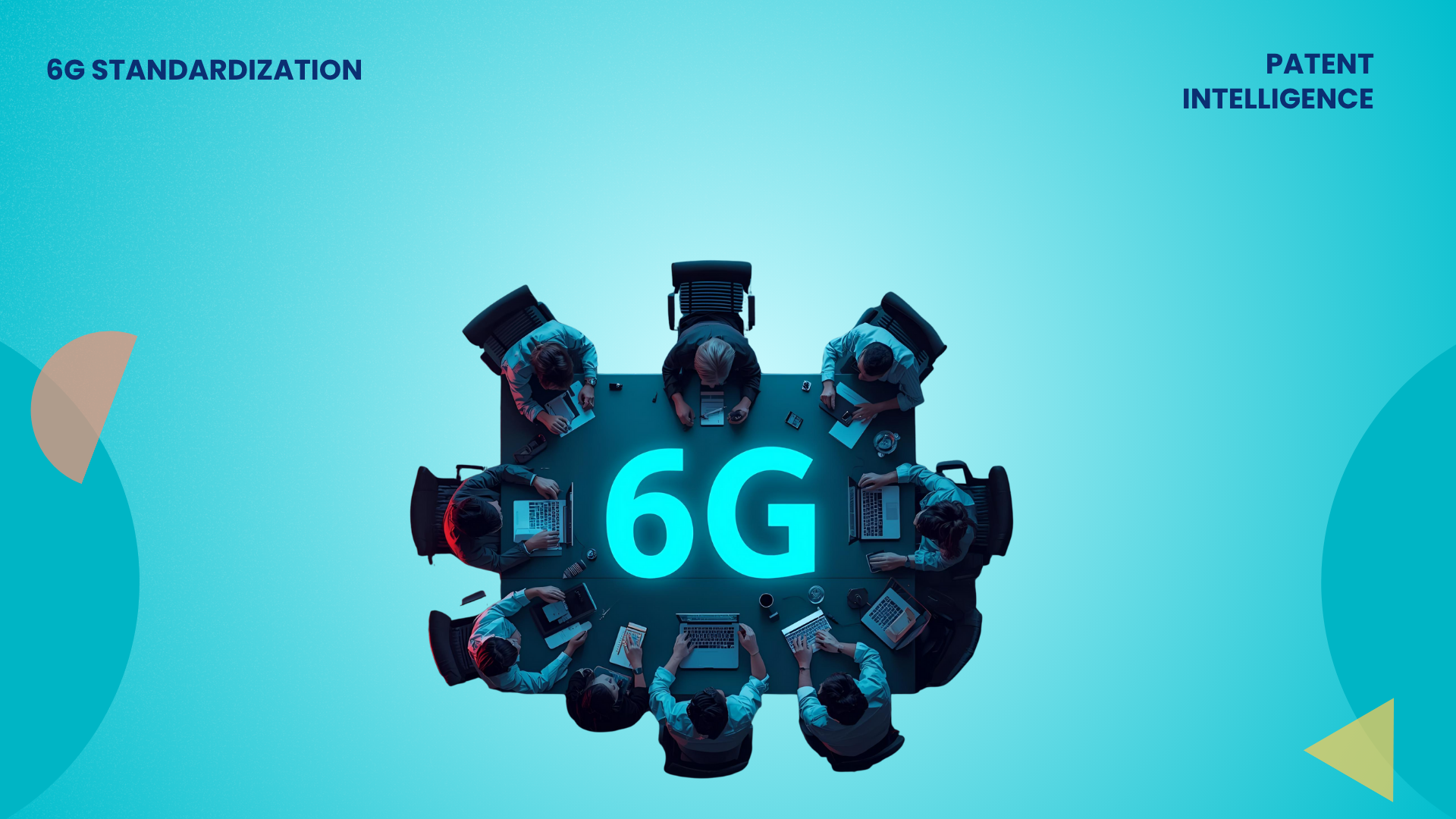As 6G standardization takes shape, the landscape is already showing signs of fragmentation.
Who is Leading the Future Standards?
3GPP Contribution Split: The convergence of telecom incumbents and non-telecom innovators. Click or hover on a segment for details.
Established leaders focusing on core standardization and converting R&D into essential patents (SEPs).
Newcomers from diverse sectors driving innovation in specialized 6G technologies.
Select a segment above to reveal strategic details.
Our analysis reveals that while telecom giants such as Huawei, Nokia, and Ericsson continue to lead in patent filings, non-telecom companies now account for nearly half of the contributions to the development of key technologies. These include areas such as artificial intelligence (AI), machine learning (ML), Reconfigurable Intelligent Surfaces (RIS), and quantum communication.
This duality creates both opportunities and risks. On one hand, newcomers from aerospace, automotive, and computing sectors are building positions that could reshape future licensing negotiations. On the other hand, established telecom leaders are rapidly converting their R&D into patents, potentially leaving late-movers exposed.
The article examines how early contributions, technology-specific filing surges, and emerging non-telecom entrants are shaping the 6G landscape. It highlights where new litigations for essential patents will emerge and how companies, both incumbents and entrants, can position their portfolios today to gain an edge in tomorrow’s licensing negotiations.
A Diverse Participation Landscape: Telecom vs Non-Telecom in 6G standardization
In current 3GPP discussions, telecom entities such as Huawei, Nokia, Ericsson, and Qualcomm have led the majority. Yet non-telecom participants already account for 43%, a figure that mirrors what we saw in 5G, where ~42.7% of SEP declarations originated outside traditional telecom.

As the technological scope of 6G expands beyond traditional mobile broadband into areas like AI, immersive communication, and 3D connectivity, the participation of companies with respective technological domains is increasing.

Number of telecom and non-telecom entities
However, when examining the share of patent filings, telecom and non-telecom players hold approximately 50-50 percent of the 6G landscape portfolio. This creates a window for non-telecom players: unless they accelerate patenting efforts now, they risk being shut out when licensing negotiations begin.
Once the 6G standards are finalized, we’ll be able to understand the exact declaration landscape for both telecom and non-telecom players.

6G patent share of telecomm and non-telecomm companies
Enabling Technology distribution in 6G 3GPP contribution
Looking at the distribution, in roughly half of the key 6G enabling technology areas, contributions from telecom and non-telecom companies are nearly equal.

Share of 6G contributions in 3GPP by Telecom and non-Telecom companies in key 6G enabling technologies
Patent filings are accelerating in the newest, most software-defined areas of 6G. For example, patent activity in AI/ML surged in 2022, followed by a surge in RIS patents in 2023.

Top Companies Leading in these Technology verticals
While non-telecom shows strong contribution, our analysis indicates that telecom incumbents like Huawei and Nokia are still dominating the actual patent filings. However, not all technology areas follow this pattern. In quantum communication, the landscape remains largely open. Companies like Quantumctek Co. Ltd. are already filing in areas where traditional telecom players have a limited footprint, creating a unique opportunity to build influential SEP portfolios from the ground up.
Similar shifts are visible in non-terrestrial networks (NTN) and distributed ledger technologies (DLT), where newcomers such as China Electronics Technology Group and IBM are carving out positions despite being relatively minor players in the 5G SEP landscape. Their rise underlines a critical trend: 6G is enabling new entrants to establish themselves as serious licensors, adding complexity to an already fragmented environment.
That said, the majority of core technology areas, such as MIMO, advanced duplexing, and waveform innovations, remain firmly in the control of legacy telecom leaders like Nokia, Samsung, Huawei, and Qualcomm. This suggests that the core of the 6G royalty base will still rest with established players, but their dominance will no longer be uncontested. The growing presence of non-telecom firms in specialized technology verticals increases the likelihood of cross-industry licensing disputes, especially when these portfolios are leveraged defensively.
Unlike telecom incumbents, who often seek direct monetization of their SEP holdings, many non-telecom entrants are likely to pursue patents to secure freedom-to-operate or reduce royalty exposure in adjacent industries such as aerospace, automotive, or computing. This behavioral difference could fundamentally alter the 6G licensing ecosystem, leading to more complex cross-licensing negotiations and potentially higher transaction costs for implementers.
Access the rest of the top companies in respective technology verticals, via GreyB’s 6G dashboard

Leading Countries and Their Technology Focus Areas
China is leading participation with 109 entities contributing to 3GPP discussions, a scale unmatched by any other region. While its research spans multiple domains, there is a clear concentration in AI/ML and core network intelligence, spearheaded by Huawei.

Country’s share of 6G contribution in 3GPP

Number of entities (Academia/ Companies) in the geographical region
Europe is leveraging cross-industry collaboration. Alongside telecom leaders Nokia and Ericsson, aerospace and defense giants like Thales and Airbus are actively shaping discussions, especially around non-terrestrial networks (NTN) and industrial use cases. Europe’s strategy appears to be geared toward defining enterprise-driven 6G applications, ranging from automotive to logistics and defense, ensuring that standards serve both consumer and industrial ecosystems.
Conclusion
Telecom leaders, such as Huawei, ZTE, and Qualcomm, have already begun positioning themselves for dominance by expanding their patent portfolios and strengthening their geographic presence across key markets. We saw a similar pattern when 5G was still in its infancy, companies were shipping 4G products while quietly securing the patent assets that would later define the next generation of wireless technology.
The same pattern is repeated with 6G. But this time, the race is broader, with non-telecom entrants from aerospace, computing, and defense adding new dimensions to the standards and 6G SEP landscape.
6G Patent Landscape Dashboard reveals how quickly this shift is taking shape. Qualcomm and Samsung are expanding their influence into emerging markets, such as Indonesia and the Philippines, while LG, Huawei, and Ericsson are focusing on AI-centric and software-defined innovations. Qualcomm’s growing footprint in India further highlights how geographic diversification is becoming a core pillar of 6G patent strategy. These movements signal that the 6G race will be shaped not only by who contributes the most, but by who anticipates the direction of standardization and secures early control of essential technologies.
To explore deeper insights, including detailed 3GPP contributions, technology-specific filing surges, and competitor analysis, access GreyB’s 6G Dashboard. It is an interactive platform that delivers real-time intelligence on global 6G patent activity and standardization trends.
Contact GreyB today to request a live demo of the 6G Landscape Dashboard.












